Customers don’t buy features
You and your team worked hard and long on your innovative product. You want the world to know and understand why your product is revolutionary. It’s tempting to put the spotlight on the product: features, performance, specs, innovations. But here’s the truth: customers don’t buy features. More often than not, they don’t even know for sure your product will solve their problem when they decide. They simply buy the confidence that your product will work for them, in their context. You may invoice them for the product, but they expect a lot more.
- 10 min read
- Oct 23, 2025 12:00:00 AM
How Marketing Automation Transforms the B2B Buyer's Journey
The B2B sales journey is often characterized by its complexity, involving a diverse array of stakeholders with varying perspectives and timelines. Guiding a prospect through this intricate path to becoming a valued customer can feel like a significant undertaking. Fortunately, B2B marketers and sales professionals excel at navigating these complexities, providing valuable insights and maintaining engagement throughout the buyer's journey.
- 7 min read
- Aug 19, 2025 3:24:04 PM
Aligning sales and marketing for better results
Just as the old model of news dissemination has been shattered – a few dominant outlets now replaced by a cacophony of voices - so has the traditional approach to healthcare marketing. Your healthcare B2B customers are turning into B2C right before your eyes, side-stepping your funnel and doing research and evaluation on their own, without seeking a contact with your sales team. According to a 2017 study by research company Forrester, 68% of B2B customers said they preferred to do their own research, rather than interact with a sales rep. This is a big change over 2015, when this figure was only 40%.
- 4 min read
- Nov 21, 2018 1:34:24 PM
Why you need a strong relationship between marketing and sales (smarketing)
We hear a lot about how the B2B sales process has changed. From push to pull, from outbound to inbound, from talking to a live person to receiving automated marketing replies …. The funnel looks a lot different now than it did 10, or five, or even two years ago.
- 5 min read
- May 2, 2018 2:28:00 PM
How marketing can support sales reps in social selling
If you’re a B2B marketer working in 2017, you’ve likely switched over to an inbound marketing approach, based on the three stages in the buyer’s journey: awareness, consideration, and decision. But has your sales team made the same switch in how they sell your product or solution?
- 4 min read
- Oct 18, 2017 12:06:22 PM
Contact us
Lists by Topic
- B2B marketing (34)
- Healthcare (27)
- B2B marketing strategy (21)
- Content marketing (20)
- inbound marketing (20)
- B2B content marketing (19)
- Healthcare Marketing (16)
- branding (10)
- Digital marketing updates (8)
- Sustainability (8)
- reference marketing (8)
- B2B social media (7)
- Digital marketing strategies (7)
- Social media marketing (7)
- lead generation (7)
- B2B Business Plan (6)
- Customer Reference Program (6)
- Digital marketing trends (6)
- Employer branding (6)
- Social Media (6)
- Visual identity (6)
- analytics tools (6)
- digital marketing (6)
- videomarketing (6)
- Digital marketing plan (5)
- Smarketing (5)
- brand identity (5)
- sales and marketing (5)
- sonar (5)
- Communication (4)
- SEO (4)
- Video marketing (4)
- content (4)
- digitale marketing (4)
- metrics (4)
- online strategie (4)
- showpad (4)
- Content plan (3)
- Customer Reference (3)
- Marketing Metrics (3)
- Marketing automation (3)
- Measure ROI (3)
- Sales Enablement tools (3)
- business identity (3)
- hubspot (3)
- marketing analytics tools (3)
- online marketing (3)
- sociale marketing (3)
- web site (3)
- AI (2)
- B2B marketing plan (2)
- Blogs (2)
- Customer Reference Strategy (2)
- Facebook marketing (2)
- Google updates (2)
- Growth Marketing (2)
- Market your content (2)
- Print (2)
- ROI (2)
- Voice of Customer sessions (2)
- analytics (2)
- brand (2)
- corporate identity (2)
- corporate narrative (2)
- dashboard (2)
- design (2)
- digitale marketing analytics (2)
- logo (2)
- marketing analytics (2)
- marketing trends (2)
- neuromarketing (2)
- positioning (2)
- reporting (2)
- reporting service (2)
- visual (2)
- visual story (2)
- Content promotion (1)
- Digital marketing in China (1)
- Facebook live (1)
- Inbound recruitment (1)
- Inoffensive close (1)
- Market Research (1)
- Marketing ROI (1)
- More online traffic (1)
- New media (1)
- Podcasts (1)
- SEO trends 2018 (1)
- SMART goals (1)
- SMART goals and objectives (1)
- SMART marketing goals (1)
- Sales (1)
- Sales in modern age (1)
- Veeva (1)
- blogging (1)
- brand design (1)
- business (1)
- creating effective content (1)
- infusinar (1)
- internal communication (1)
- loyalty (1)
- loyalty ladder (1)
- marketing manager (1)
- marketing plan (1)
- marketing trends 2018 (1)
- online campaign (1)
- search engine optimization (1)
- storytelling (1)
- tips and tricks (1)
- visual branding (1)


